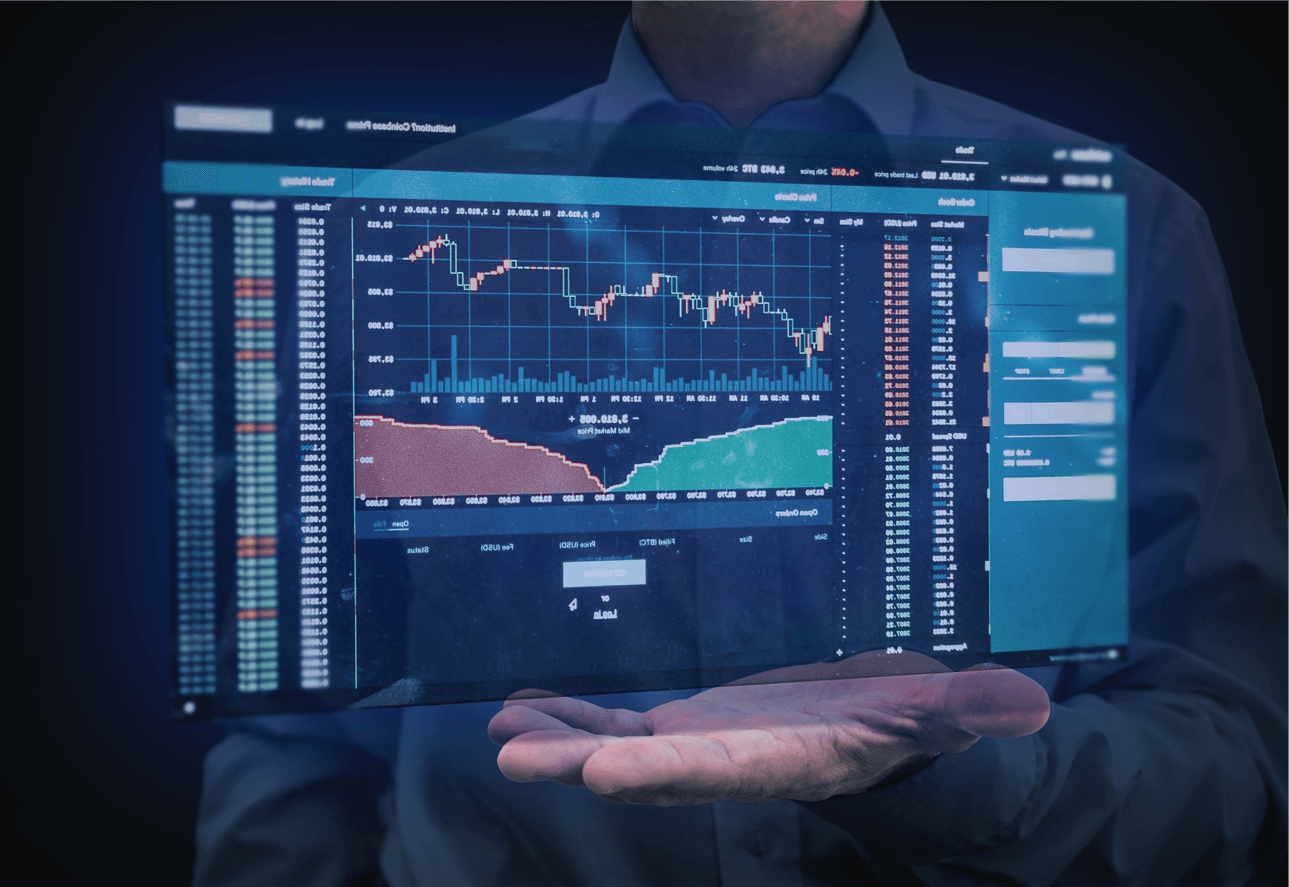If you suspect an active attack on your business, call us at: 212-616-3663 or email: services@cmitnynj.com
- 212- 616-3663
- 50 Harrison St. PH 608 Hoboken, NJ 07030

In the rapidly evolving landscape of financial trading, the integration and utilization of technology serve as a pivotal force driving performance and efficiency. Two foundational components of trading technology are the Order Management System (OMS) and Execution Management System (EMS). These systems play critical roles in managing trades and optimizing trading strategies, which are essential for asset, wealth, and alternative investment managers.
The Order Management System is designed to facilitate the complete trade lifecycle, from the initial order entry to trade confirmation and settlement. An effective OMS allows portfolio managers and traders to streamline operations, ensuring that orders are executed efficiently while maintaining comprehensive oversight. By integrating with platforms such as crd.com, asset managers can significantly enhance their order processing capabilities and gain valuable insights into trading activities.
On the other hand, the Execution Management System focuses on the actual execution of trades. EMS platforms are critical for executing orders quickly and effectively while providing analytics to assess the quality of execution. Many of these systems, including blackrock.com/aladdin, offer tools that enable traders to analyze market conditions and improve decision-making processes, ultimately achieving better trade outcomes. Execution Management Systems ensure that trades are executed at the best possible prices and within the desired time frames.
Both OMS and EMS are instrumental in the optimization of trading strategies. Integrating these systems facilitates a more cohesive approach to managing trades and executing orders, enabling investment managers to adapt swiftly to market changes. Furthermore, by incorporating advanced analytics from platforms such as flextrade.com or bloomberg.com/ professional/products/trading/order-management-system, firms can gain actionable intelligence that improves both strategic planning and operational execution. The fusion of OMS and EMS into trading workflows not only enhances performance but also supports the growing need for compliance and transparency in the financial markets.
The investment technology landscape is undergoing significant transformation, driven by several key trends that are reshaping how investment managers operate. One of the most notable trends is the rise of automation across various processes. Automation technologies are being increasingly leveraged to streamline trading operations, enhance efficiency, and reduce human error. For instance, platforms such as crd.com are at the forefront of offering tools that enable firms to automate trading strategies with precision and speed, thus allowing managers to focus on higher-value tasks.

Alongside automation, the implementation of artificial intelligence (AI) has become a game-changer for the investment sector. AI algorithms are now being employed to analyze vast amounts of data and identify profitable trading opportunities. This trend has created competitive advantages for managers who successfully integrate AI into their trading frameworks. Websites like blackrock.com/aladdin provide comprehensive AI-driven solutions that assist firms in optimizing decision-making and addressing market complexities in real-time.
The integration of big data analytics also plays a pivotal role in shaping investment strategies. By analyzing large datasets, investment managers can uncover insights that influence their trading decisions.
This capability allows for a more nuanced understanding of market trends and investor behavior. Tools offered by flextrade.com and bloomberg.com/ professional/products/trading/order-management-system equip managers with the necessary analytics to leverage big data effectively, thereby enhancing operational efficiency and fostering more informed investment strategies.
These trends collectively signal a shift towards a more data-driven, technology-enabled investment environment, compelling firms to adapt to remain competitive and relevant in an evolving market landscape.

The investment technology landscape has changed dramatically in recent years, driven by the necessity for firms to enhance their operational capabilities and adapt to evolving market demands. However, the transition to new platforms, such as those offered by crd.com, brings a distinct set of risks that organizations must carefully navigate. Chief among these are cybersecurity threats that could compromise sensitive financial data and proprietary trading strategies. As firms increasingly rely on digital solutions, the risk of data breaches and cyberattacks escalates, necessitating comprehensive security measures. This aspect can significantly increase the costs associated with implementation, as companies must invest in state-of-the-art cybersecurity protocols and training personnel to recognize potential vulnerabilities.
Moreover, the financial implications of technology transformation extend beyond cybersecurity. The initial costs of acquiring and integrating new systems, such as those offered by blackrock.com/aladdin or flextrade.com, can strain budgets, particularly for smaller firms. Implementation timelines can also lead to unforeseen expenses, as the disruption of existing operations may temporarily hinder productivity. Thus, organizations must prepare a robust financial strategy that addresses these concerns while ensuring that the long-term benefits of improved technologies outweigh the initial risks.
On the brighter side, the opportunities presented by investment technology transformation are equally compelling. Organizations that successfully adopt advanced trading and order management systems, such as those provided by bloomberg.com/professional/ products/trading/order-management-system, benefit from enhanced decision-making capabilities and improved operational efficiency. These advanced systems facilitate access to vast amounts of data, empowering firms to make more informed investment choices. Furthermore, the automation of routine tasks frees up valuable human resources, allowing investment professionals to focus on high-value activities that drive growth. In conclusion, while the risks of implementing new investment technologies are significant, the potential for operational improvement and superior market positioning makes the endeavor worthwhile for many firms.
Investment technology transformation is crucial for asset and wealth managers seeking to enhance efficiency and drive growth. To ensure a successful transformation, several best practices should be considered, focusing on planning, stakeholder engagement, resource allocation, and continuous improvement.
First and foremost, a thorough planning phase is essential. Asset managers should begin with a clear vision of the transformation objectives. This can include identifying specific pain points in their current systems or seeking opportunities for improved customer experience. Utilizing insights from industry leaders like crd.com, asset managers can establish a roadmap outlining the timelines, milestones, and resources required. This comprehensive approach can mitigate risks that often lead to pitfalls during implementation.

Stakeholder engagement plays a pivotal role in successful technology transformation. Involving key stakeholders, including team members and external partners, in the planning process fosters a sense of ownership and ensures that various perspectives are considered. Regular communication about progress and changes is also crucial. Platforms such as blackrock.com/aladdin offer collaborative tools that facilitate ongoing dialogue among diverse teams, allowing them to contribute to the transformation process effectively.
Effective resource allocation is another critical area. Organizations should conduct a thorough assessment of their existing technology landscape and allocate funds, human resources, and time accordingly.
Leveraging external solutions, such as those offered by flextrade.com or bloomberg.com/professional/products/trading/order-management-system, can optimize costs while enhancing system capabilities.
Finally, continuous improvement must be embedded within the organization’s culture. Regularly measuring performance against established benchmarks allows firms to identify successes and areas for further enhancement. By adopting an iterative approach, asset managers can remain agile, adjusting strategies as technological landscape evolves, ensuring long-term success in their transformation efforts.

Asset and wealth managers face a multitude of challenges during the implementation of technology solutions. One of the foremost challenges is data management. With numerous data sources generating vast amounts of information, organizations struggle to consolidate, cleanse, and analyze this data effectively. The risk of erroneous data can lead to poor investment decisions and mismanagement of client portfolios. Solutions such as those offered by crd.com aim to streamline data integration, providing a single source of truth. However, the initial setup and ongoing maintenance present significant hurdles for managers.
Another pressing issue for asset managers is the integration of legacy systems. Many firms operate with outdated technology that may not easily interface with new platforms. The strain of migrating data from legacy systems while ensuring minimal disruption to ongoing operations can be overwhelming. Moreover, some proprietary systems lack compatibility with leading market solutions like blackrock.com/aladdin or flextrade.com, complicating the move to more modern infrastructure. This incompatibility can stall technological advancement and restrict strategic growth opportunities.
User adoption also presents a formidable challenge. Even with the implementation of advanced technology, the lack of sufficient training can result in low usage rates and reluctance among staff to adopt new systems. It is essential that asset managers invest in training programs and promote a culture that embraces technological innovation. Strategies to enhance user adoption might also include seeking feedback on usability and ensuring that new tools provide clear, tangible benefits to the users’ daily tasks. Transitioning to modern solutions such as the order management system from Bloomberg can greatly improve efficiency, but this requires a commitment to overcome the relational and operational barriers posed by existing practices.
The investment technology landscape is undergoing significant transformation as firms seek solutions that enhance efficiency and adaptability. Leading platforms such as Charles River, Aladdin, and Bloomberg’s Order Management System are at the forefront of this evolution, each offering a unique array of features tailored to meet the diverse needs of financial institutions.
Charles River is recognized for its comprehensive investment management capabilities, providing solutions that span the entire investment lifecycle. Its integration of portfolio management, trading, and compliance functions into a single platform enhances operational efficiencies and supports rigorous risk management strategies. However, as client preferences shift towards cloud-based solutions and data analytics, Charles River must continually innovate to remain competitive in this dynamic environment.

On the other hand, BlackRock’s Aladdin platform stands out with its robust risk analytics and portfolio management tools. This platform is particularly esteemed for its ability to provide real-time insights, which are crucial for decision-making in a fast-paced market. Nonetheless, Aladdin faces challenges, including the necessity to adapt its offerings for smaller firms seeking accessible and cost-effective solutions while maintaining its appeal to larger institutional clients.
Bloomberg, with its Order Management System, leverages its extensive market data and analytics to deliver a powerful trading solution. Known for its user-friendly interface and real-time data integration, the platform remains popular among traders who value speed and accuracy.
Bloombergs’ challenge lies in differentiating itself as newer entrants emerge with innovative features, compelling Bloomberg to continually enhance user experience and functionalities.
As these leading platforms navigate the complexities of the investment technology space, they must stay attuned to evolving client demands, regulatory pressures, and technological advancements to sustain their market positions and foster growth.

The investment landscape is undergoing a significant transformation as asset and wealth managers increasingly look towards advanced technologies to refine their strategies and enhance decision-making processes. Central to this evolution are artificial intelligence (AI), big data analytics, and large language models (LLMs), which collectively enable the processing of vast volumes of information and the extraction of actionable insights.
AI systems have the potential to streamline various investment processes, from predictive analytics to automated trading strategies. By harnessing AI, firms can analyze market patterns, news sentiment, and economic indicators at an unprecedented scale, enabling them to make informed decisions swiftly. For instance, leading platforms such as crd.com provide sophisticated tools that integrate these technologies into investment management, allowing for enhanced risk assessment and portfolio optimization.
Big data further enhances these capabilities by facilitating the collection and analysis of diverse datasets, which include historical market data, social media sentiment, and financial news articles. By implementing big data solutions, firms can uncover hidden trends and correlations that traditional methods might overlook. Notable providers like blackrock.com/aladdin offer comprehensive data processing solutions that can support wealth managers in storing, managing, and interpreting large datasets to drive better investment outcomes.
Nevertheless, the integration of these advanced technologies is not without challenges. Asset management firms must navigate concerns related to data privacy, regulatory compliance, and the complexities of merging legacy systems with modern technologies. Additionally, while platforms like flextrade.com and bloomberg.com/professional/products/trading/order-management-system advocate for seamless integration, the process requires substantial investment in infrastructure and employee training.
In conclusion, while the deployment of AI, big data, and LLMs presents remarkable opportunities for wealth and asset managers, careful consideration of the associated challenges will be essential for maximizing their potential benefits.
Small and medium-sized investment managers are increasingly recognizing the importance of technology in optimizing their operations and improving client service. However, they face unique challenges in adopting and integrating advanced investment technologies. One of the primary issues is the constraint on resources—both financial and human capital. Unlike larger firms with substantial budgets, smaller firms often lack the capital to invest in comprehensive systems such as those offered by platforms like crd.com or blackrock.com/aladdin, which may limit their access to cutting-edge features. This resource constraint can hinder their ability to leverage data analytics and advanced order management systems effectively.

Despite these challenges, small and medium investment managers can find ways to turn technological impediments into opportunities. By focusing on niche markets and delivering specialized services, these firms can differentiate themselves. The collaboration with technology providers such as flextrade.com can facilitate access to robust trading and operational tools tailored to their specific needs. Additionally, utilizing platforms like bloomberg.com/professional/products/trading/order-management-system allows smaller firms to enhance their trading capabilities without the heavy financial burden of developing in-house solutions.
Moreover, the regulatory landscape offers small investment managers an advantage. They can adapt more quickly than larger firms to comply with new regulations, making their operations more agile. Agility, in this case, becomes a competitive edge, allowing them to respond promptly to client needs while implementing new technologies. By embracing a scalable approach to technology adoption, smaller firms can develop a tailored roadmap that aligns with their strategic goals and client expectations, fostering both growth and innovation.

Investment technology transformation presents both challenges and opportunities for firms looking to enhance their operational efficiency and client service. As discussed, the integration of advanced solutions, such as those offered by crd.com and blackrock.com/aladdin, provides a pathway towards more streamlined workflows and improved decision-making abilities. Additionally, platforms like flextrade.com and bloomberg.com/professional/products/trading/order-management-system can play a crucial role in helping investment managers adapt to a rapidly changing market landscape.
The primary challenges of this transformation process revolve around identifying the right technologies, integrating them seamlessly into existing systems, and ensuring staff are adequately trained to utilize these new tools. As the industry becomes increasingly data-driven, it is essential for investment firms to maintain agility and adaptability in their technology choices. An analysis of current operational pain points is critical in determining specific technology needs that align with the firm’s long-term objectives.
Reflecting on the trends highlighted throughout this post, investment managers should prioritize a proactive approach to technology adoption. The volatility of the financial markets necessitates robust and flexible systems to respond quickly to market dynamics. Engaging with technology vendors and industry experts can facilitate a more informed decision-making process, enabling firms to leverage innovative solutions effectively.
We encourage investment managers to take a step back and critically assess their technology requirements. Understanding where existing systems fall short and exploring advanced alternatives can significantly enhance operational performance. Implementing a well-thought-out technology strategy is not just an option but a necessity in today’s competitive environment. Take action now to ensure your investment firm is well-positioned for the future by investing in transformative technologies.
© 2025 Vertus Solutions and Services. All rights reserved.
